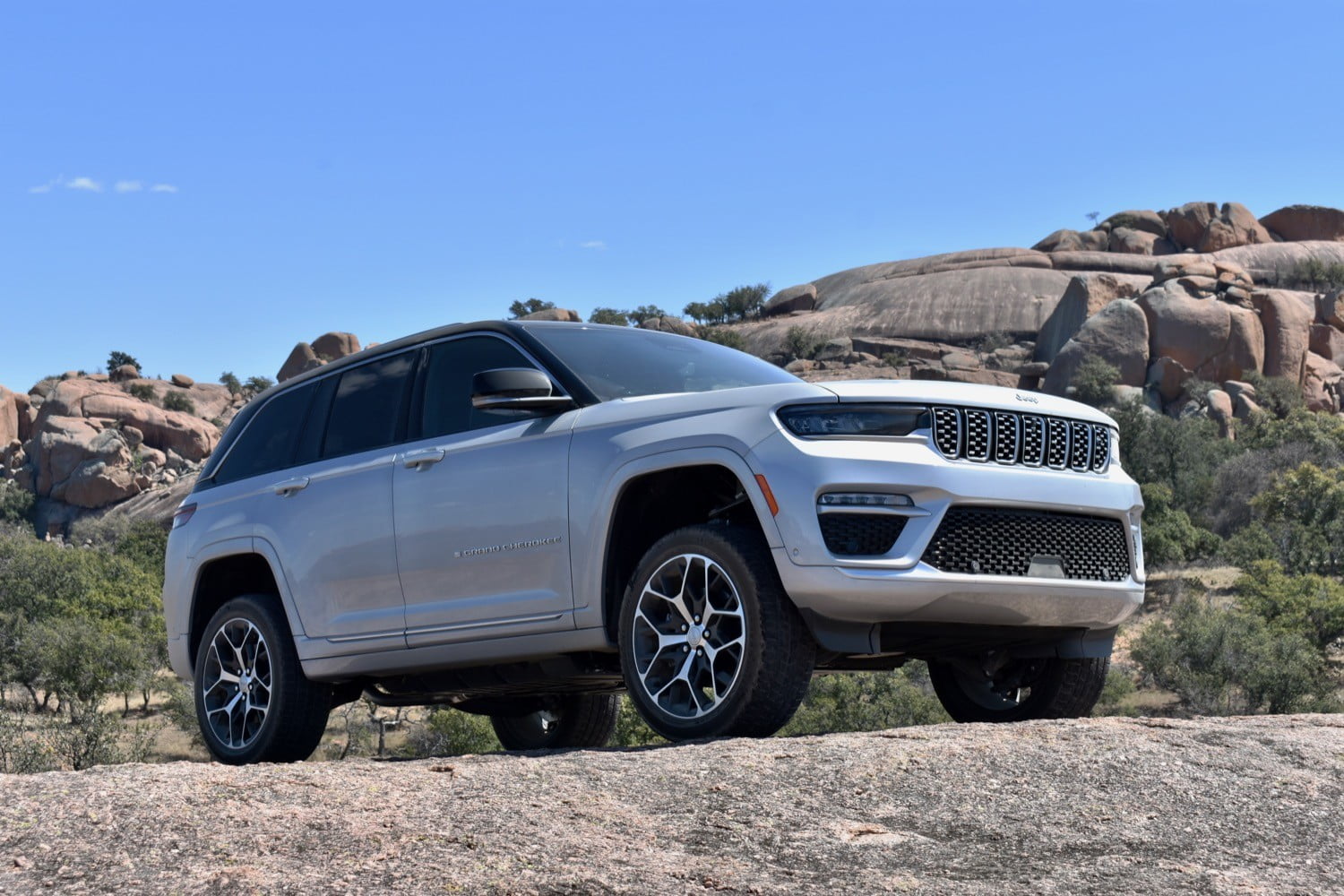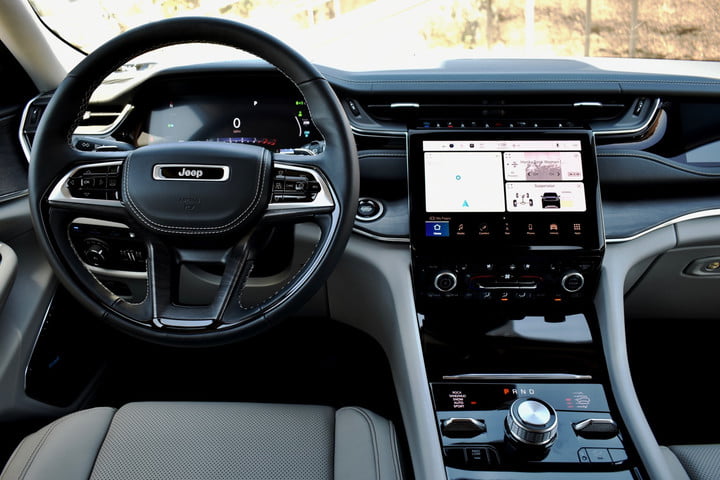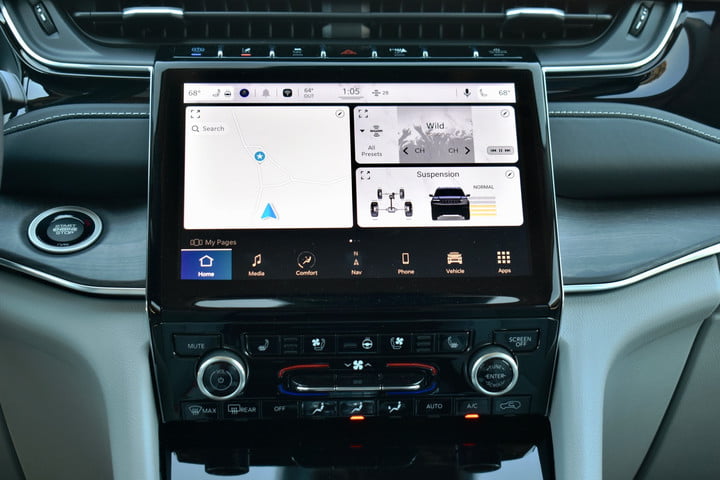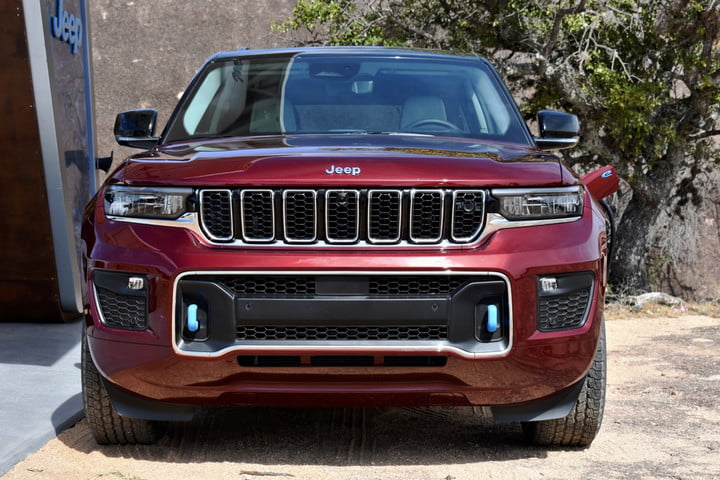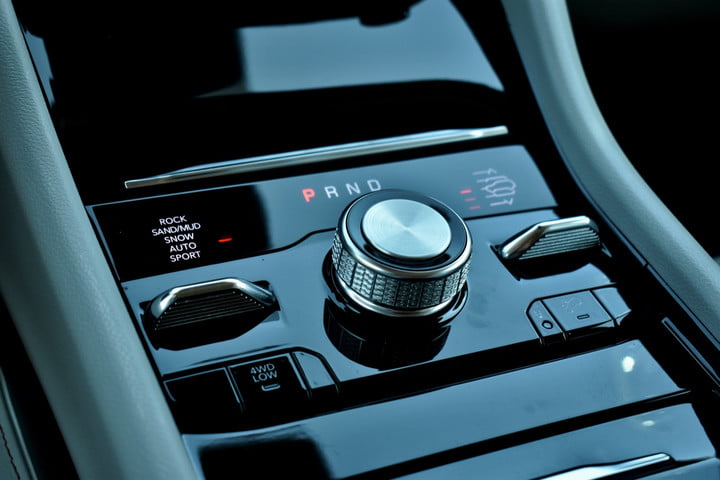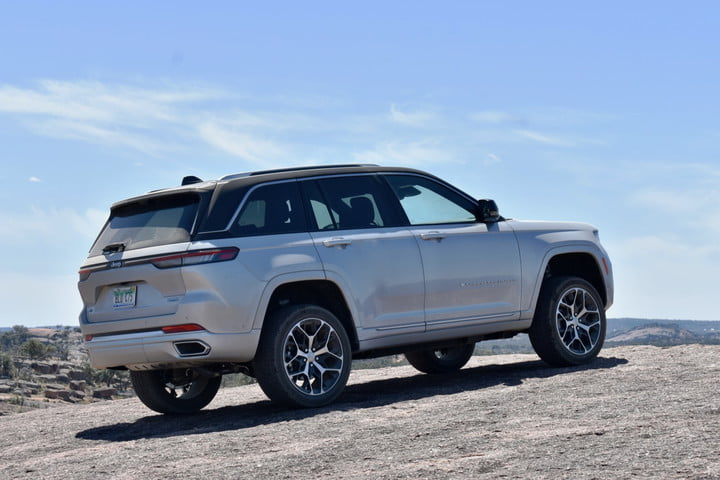Jeep is embracing electrification but, like a 4×4 crawling over a pile of rocks, it’s doing so slowly and methodically.
The first all-electric Jeep is scheduled to launch in 2023, but in the meantime, we’re getting plug-in hybrids. With gasoline engines to curb range anxiety and traditional mechanical four-wheel drive systems to preserve off-road capability, Jeep’s 4xe (pronounced “four-by-e”) plug-in hybrids bridge the gap between two eras.
Jeep started with what was arguably the tougher job — a 4xe version of its iconic Wrangler. Now it’s moving on to another familiar nameplate. The 2022 Jeep Grand Cherokee 4xe is an electrified version of the brand’s family SUV mainstay. While several similarly sized plug-in hybrid SUVs are hitting the market, none are quite like this Jeep.
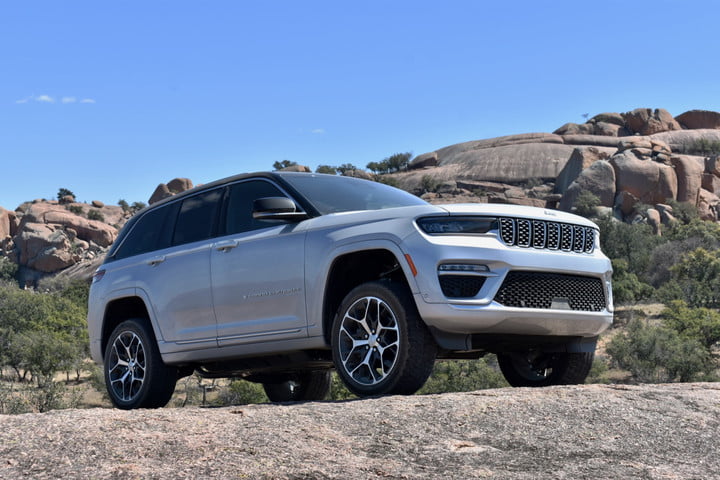
The Grand Cherokee 4xe splits the difference between mainstream entries like the Hyundai Santa Fe and Kia Sorento plug-in hybrids and more luxury offerings like the BMW X5 xDrive45e, Lincoln Aviator Grand Touring, and Volvo XC90 Recharge — but with unmatched off-road capability.
Pricing starts at $59,565 for the base model. That’s a big increase from the base non-hybrid Grand Cherokee, but you do get more standard equipment, including a three-screen infotainment system. If you move up through the Trailhawk, Overland, and Summit trim levels to the top Summit Reserve, you’ll pay $76,095 before any options. The Grand Cherokee 4xe does at least qualify for the full $7,500 federal EV tax credit because of its large 17-kilowatt-hour battery pack.
Design and interior
The entire Grand Cherokee lineup is getting a redesign that started rolling out for the 2021 model year on the three-row Grand Cherokee L model and continues for 2022 with two-row models. Code-named WL, the new Grand Cherokee is a big change from the previous-generation WK2 model.
The seven-slot grille and politically incorrect name carry over, but everything else is different. In contrast to the somewhat pudgy WK2, the Grand Cherokee WL has a more graceful, elongated profile with upright sides and nice proportions. The styling was inspired by the classic SJ Jeep Grand Wagoneer, Jeep exterior design manager Eugenio Sellano-Neto said in a presentation ahead of our test drive. We think this Grand Cherokee is a better homage to the SJ than the actual current-generation Grand Wagoneer, in fact.
You can’t get a three-row Grand Cherokee 4xe, something that is available on the lower-priced Kia Sorento plug-in hybrid, as well as the pricier Lincoln Aviator Grand Touring and Volvo XC90 Recharge. The 4xe does have comparable interior space to these similarly sized SUVs, as well as non-hybrid Grand Cherokee models, though. Its 32.7 cubic feet of cargo space with the rear seats in place, and 70.8 cubic feet with the rear seats folded, is on the low end for an SUV of this size, but identical to a comparable non-hybrid Grand Cherokee.
We found the interior to be fairly upscale, with nicely integrated screens and appealing details like the large gear selector knob and switches for the drive modes and four-wheel drive system. Fit and finish also seemed worthy of a luxury vehicle, let alone a rugged Jeep. We weren’t as impressed with the copious piano black plastic (which attracted lots of dust), the Trailhawk’s vinyl seats, or the molded wood trim on Overland models, but the latter does at least get Nappa leather upholstery. And we had no issues with material quality on the high-end Summit and Summit Reserve models.
Tech, infotainment, and driver assist
All 4xe models come standard with a 10.1-inch touchscreen, 10.1-inch digital instrument cluster, and a 10.2-inch touchscreen for the front passenger. Wireless Apple CarPlay/Android Auto and a built-in 4G LTE Wi-Fi hot spot are standard as well. A 10-inch head-up display, rear-seat entertainment system with built-in Amazon Fire TV connectivity, and a 19-speaker McIntosh audio system are also available.
The Uconnect 5 infotainment system kept the various screens working well. Jeep crams in a lot of information, from typical features like navigation to pitch and roll angles for off-roading, but it was easy to toggle between everything. The main touchscreen was set up to show a few different widgets at once without looking cluttered, and Jeep’s UX designers made some smart decisions. Climate controls stay in a menu bar at the top of the screen, so you can make adjustments without having to exit Apple CarPlay or Android Auto. Jeep also lets drivers quickly pull up a front camera view with one tap — that’s not always the case in other vehicles.
The front-passenger screen only works when someone is sitting in the seat and, because we drove solo, we weren’t able to test it out. But we think Jeep’s approach of decentralizing the interface with multiple screens makes more sense than using one oversize screen for everything. Aside from the latest Mercedes-Benz EVs, you won’t find a similar setup anywhere else, either.
Standard driver-assist features include forward-collision warning, automatic emergency braking, rear cross-traffic alert, blind-spot monitoring, lane-keep assist, lane-departure warning, adaptive cruise control, and rear park assist. Optional features include night vision, a 350-degree camera system, a digital rearview mirror, traffic-sign recognition, a driver-attention monitor, parallel and perpendicular park assist, and Travel Assist, which adds automated lane centering to the adaptive cruise control.
Driving experience
Similar to the Wrangler 4xe, the Grand Cherokee 4xe uses a 2.0-liter turbocharged four-cylinder engine, eight-speed automatic transmission, and two electric motors.
One motor acts purely as a starter/generator, while the second motor, which is positioned between the engine and transmission, is used for propulsion. In electric mode, a clutch allows it to connect to the drivetrain while decoupling the engine. The engine then clutches back in for hybrid mode. An electric air conditioning compressor also helps improve efficiency by shifting some of the power demand from the gasoline engine to the electric motors.
This complex system produces 375 horsepower and 470 pound-feet of torque, enabling a robust 6,000-pound maximum towing capacity, according to Jeep. That’s less than some non-hybrid Grand Cherokee models, but about the same as the BMW X5 and Lincoln Aviator plug-in hybrids. The automaker also quotes zero to 60 mph in about 6.0 seconds, which it claims is about a second quicker than a non-hybrid Grand Cherokee with the largest-available V8 engine.
Unlike non-hybrid Grand Cherokee models, the 4xe also gets standard four-wheel drive. And unlike other plug-in hybrid SUVs, it gets the hardware needed for serious off-roading. The four-wheel drive system is similar to non-hybrid Grand Cherokee models, with a two-speed transfer case and low range that allow the 4xe to crawl over low-traction surfaces. An optional air suspension system enables 10.9 inches of ground clearance (on Trailhawk models), and if that’s not enough, you still have steel skid plates protecting the vehicle’s underside — including the battery pack.
This adds up to an SUV that can off-road like a conventional Jeep, while using less fuel. Jeep was eager to show off the Grand Cherokee’s capabilities, sending us through an off-road course where, at one point, we were guiding a Trailhawk model up a rock face with two wheels off the ground. The fact that we were doing this in a plug-in hybrid caused no issues. It was even possible to cruise along in electric mode (although the amount of throttle required to get up steep inclines caused the gas engine to kick on). When it comes to off-roading, the Grand Cherokee 4xe is the real deal.
It’s unclear how many owners will take their circa-$60,000 SUVs off-road, but everyone will appreciate the Grand Cherokee’s on-road manners. We did our on-road driving in a midlevel Overland model, and were impressed by its comfortable ride, quiet cabin, and predictable handling characteristics. While there were some minor blemishes, such as an occasional clunk when the drivertrain switched from electric to hybrid mode and an unattractive engine note, the overall experience was downright luxurious.
Gas mileage and safety
The Grand Cherokee 4xe is rated at 25 miles of electric range with a 56 MPGe combined efficiency rating. A standard 7-kilowatt onboard charger allows for a full recharge in 3.4 hours using a 240-volt Level 2 AC source, Jeep said.
Electric range is slightly less than you get in the Hyundai Santa Fe and Kia Sorento plug-in hybrids, as well as the BMW X5 xDrive45e and Volvo XC90 Recharge. We also fell short of that rating, even in low-speed driving, but the Jeep’s aggressive regenerative braking allowed us to get a few miles of electric range back fairly easily. We also found that, in normal driving, the Jeep was able to stay in electric mode consistently without turning on its gasoline engine.
In hybrid mode, the 4xe is rated at 23 mpg combined, meaning it’s only slightly more efficient than a Grand Cherokee with the standard V6 engine, which is rated at 22 mpg combined. As with all plug-in hybrids, you only get an efficiency benefit if you actually charge the 4xe regularly.
Crash-test ratings from the Insurance Institute for Highway Safety (IIHS) and National Highway Traffic Safety Administration (NHTSA) were not available at the time of publication. The previous-generation WK Grand Cherokee did not get perfect scores from either organization, so there is definitely some room for improvement.
Jeep offers a three-year, 36,000-mile limited warranty and five-year, 60,000-mile powertrain warranty, plus three years of free scheduled maintenance.
Our take
The 2022 Jeep Grand Cherokee 4xe is both a good SUV and a good plug-in hybrid. Its off-road and towing abilities, as well as generous interior and cargo space, fulfill the SUV design brief. It also offers a usable amount of electric range, an electric mode that works well in normal driving, and aggressive regenerative braking.
The standard Uconnect 5 infotainment system and its three large displays, along with wireless Apple CarPlay/Android Auto and available Amazon Fire TV connectivity, also make the Jeep fairly compelling from a tech standpoint. Most trim levels also felt fairly luxurious for a vehicle from a non-premium brand.
All of that adds up to a singular vehicle that’s hard to categorize. If all you want is a plug-in hybrid with lots of room, the Hyundai Santa Fe and Kia Sorento will take care of that for a lower price. However, the Grand Cherokee offers a more upscale feel and more tech than the Korean models at a lower starting price than luxury brand plug-in hybrids from BMW, Lincoln, and Volvo. By combining rugged capability, tech, and efficiency, Jeep has found itself a good niche.
Should you get one?
Yes. This plug-in hybrid does it all.
